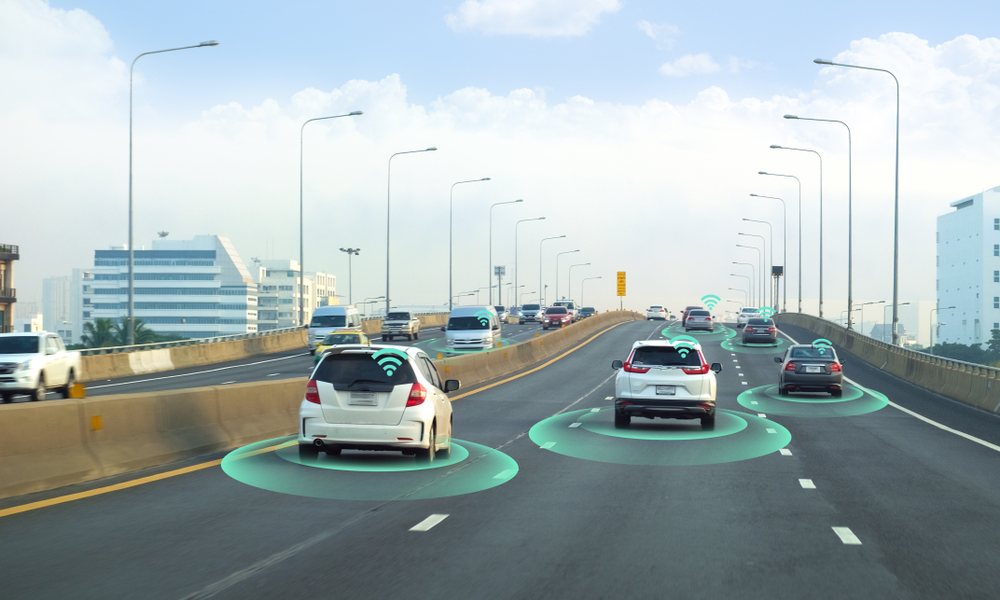Apple Outlines Its Self-Driving Car Safety Standards in New White Paper
 Credit: Akarat Phasura / Shutterstock
Credit: Akarat Phasura / Shutterstock
Toggle Dark Mode
The fact that Apple has ambitions for a self-driving car may be the company’s worst-kept secret, but while it’s clear Apple is working on something relative to autonomous vehicles, conflicting rumours and numerous changes in direction over the years have often made it difficult for anybody to pin down exactly what the company is working on.
To be fair it seems that there were times that even Apple itself wasn’t quite sure what it was doing. Early rumours back in 2015 suggested the company was planning to have an actual motor vehicle ready by 2019 — an ambitious timeline that seems quaint when looked back on now. While the report back then had suggested Apple was committed to the project, even looking to add up to 1,800 employees to speed up the process, it was revealed only a few months later that all was not going smoothly in the Project Titan labs, which saw the departure of its project chief amidst problems with setting and meeting goals for the project, overly ambitious deadlines, and manufacturing roadblocks. After realizing that building a car was a lot more complicated than building electronics, Apple sought out partnerships with established car makers without success, and by late 2016 it seemed the company had given up on building an actual car and would choose instead to focus on self-driving software.
Later reports, however, suggested that Apple hadn’t completely abandoned its car ambitions, although specific news and rumours about the project became sparse until last year when Project Titan seemingly rose from the ashes with reports that an actual, physical Apple Car would indeed be coming sometime between 2023 and 2025.
With the Apple Car getting closer to becoming a reality, it’s inevitable that transportation safety regulations are going to prompt additional disclosures on what Apple is up to, so it’s inevitable that more details are going to slowly emerge, and we’re seeing the first indications of this with a new white paper by Apple released to the U.S. National Highway Traffic Safety Administration (NHTSA).
First reported by CNET, Apple’s seven-page white paper is titled Our Approach to Automated Driving System Safety and provides some insight into Apple’s automotive plans. The paper is primarily a high-level overview of Apple’s safety priorities, so it’s sparse on details, however, offering more about the standards Apple is holding the program to than how any specific features will be implemented.
Although most of the technology Apple describes in the paper is standard for any self-driving car, it’s also a good quick primer for anybody unfamiliar with how all of this will work together. Apple also emphasizes both its testing procedures and the certification procedures for the drivers who will be operating its test vehicles.
We hire proficient and experienced safety drivers and operators who have a clear driving record with no serious accidents, DUI convictions, or any license suspensions or revocations within the last 10 years. They also must pass a drug screening and a background check before the training program starts.
Apple, Our Approach to Automated Driving System Safety White Paper
In the latter case, Apple seems to be leading in setting higher standards for its drivers, requiring that all drivers be “experienced safety drivers” with clear driving records, and no serious accidents or conditions. Apple also notes that drivers must pass a drug screening and background check, although with Apple’s culture of secrecy, the latter may be more about corporate security than safety. Apple also notes that all of its drivers are required to complete a training program that covers a full range of defensive driving techniques, vehicle-specific training, operational training for the automated driving system, and supervised driving on public roads conducted until the safety drivers can demonstrate that they meet all of the necessary performance criteria.
The paper also notes that each vehicle is required to have a two-person team while it’s being tested — the safety driver who is required to be alert and in the front seat of the vehicle at all times, with both hands on the wheel ready to assume control of the vehicle in the event of any problems, and an operator who is responsible for monitoring the system, keeping the safety driver apprised of the objects that the system has detected, and helping to ensure that the safety driver remains alert. Both operators and drivers are only allowed to work one shift per day and take frequent rest breaks while driving in order to stay alert.
Apple’s report is considerably shorter than the reports from most of its competitors, and in typical Apple fashion is lacking the kind of details that would allow readers to draw any real conclusions on what the Apple Car will look like or how it will function beyond simply using an autonomous driving system. However, the NHTSA doesn’t offer firm guidelines on what companies are required to report — in fact the reporting itself is entirely voluntary, leaving companies free to craft their reports in any way they choose, and disclose as little information as they want to. However, the very fact that Apple has published such a white paper serves as further confirmation that the Apple Car is actively in development, and that we’ll probably be hearing even more soon, even despite Apple’s typically cautious and secretive approach.






